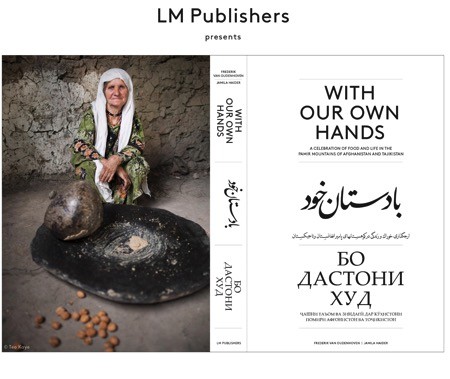- Disease risk perception and diversity of management strategies by farmers: The case of anthracnose caused by Colletotrichum gloeosporioides on water yams (Dioscorea alata) in Guadeloupe. Farmers gauge the disease pretty much the way scientists do, and use a diversity of mitigation measures, including diversity.
- Ghosts of Cultivation Past – Native American Dispersal Legacy Persists in Tree Distribution. “In the southern Appalachian region, honey locust distributions are more a reflection of Native American cultural practices.”
- Good year, bad year: changing strategies, changing networks? A two-year study on seed acquisition in northern Cameroon. In bad years, women call on extended networks.
- Conservation narratives in Peru: envisioning biodiversity in sustainable development. In terms of the relationship between conservation and development, there are biodiversity protectionists, traditionalists, localists, pragmatists, and capitalists.
- Diversity analysis based on agro-morphological traits and microsatellite based markers in global germplasm collections of roselle (Hibiscus sabdariffa L.). Nicely complementary datasets show that fibre type more diverse than calyx type.
- Extinction probabilities of Hassawi cattle from Saudi Arabia using Population Viability Analysis. Fancy maths gives it 20 years.
- Genome to Phenome Mapping in Apple Using Historical Data. Going back to old phenotype data in GRIN allowed identification of SNPs for color, fruit firmness, and harvest time.
- Genomic and archaeological evidence suggest a dual origin of domestic dogs. Independent domestications from different wolf populations in East Asia and in Western Europe, with the latter partially displacing the former.
With our own award

You remember this book, right? We enthused about it over a year ago when it first came out.
An old friend, Frederik van Oudenhoven, and his friend and colleague Jamila Haider, are deep in the proofs of what looks to be a wonderful book. With Our Own Hands “tells, for the first time, the cultural and agricultural history of the Afghan and Tajik Pamirs, one of the world’s least known and most isolated civilisations”. Should be a great read, with stunning photographs to accompany the local recipes, essays, stories and poetry. Better yet, generous donors are allowing 1800 copies to travel back to the Pamirs to be given to communities, schools, cooks and libraries.
Well, Fred and Jamila have now won the 2016 Gourmand World Cookbook Award, the Oscars of the cookbook world. You can see photos on the book’s Facebook page. And all without mentioning superfoods. Congratulations!
And by the way, you can listen to Fred talk about the book with Jeremy on Eat This Podcast.
Nibbles: Heirloom rice, Kava traditions, State turnip, Japanese paper, Potato Day, Madagascar invasion
- There’s Carolina Gold in them thar hills. Latest in a long list…
- Kava in the Pacific, island by island.
- A really ugly heirloom turnip is Vermont’s state vegetable. In other news, there are state vegetables.
- This video will make you want to make your own paper, I guarantee it.
- Oh come on, we missed Peru’s National Potato Day?
- Crop remains confirm Malagasy origins. But was Carolina Gold among them? Here’s the paper.
Brainfood: Rice & drought, Diet & biodiversity, Iranian fermentation
- Genetic and root phenotype diversity in Sri Lankan rice landraces may be related to drought resistance. Fancy genotyping and phenotyping picks out landrace whose name in Sinhalese means “drought rice.”
- The relationship between agricultural biodiversity, dietary diversity, household food security, and stunting of children in rural Kenya. Increasing dietary diversity could increase household food security.
- Biodiversity and origin of the microbial populations isolated from Masske, a traditional Iranian dairy product made from fermented Ewe’s milk. Streptococcus thermophilus doesn’t sound like a safe thing to be drinking, but I still want to try it.
- Well, what can I tell ya, that’s all that caught my eye last week. Send me your favourite paper that I missed, and I’ll summarize it in a sentence by next Monday.
Nibbles: Fixing food, Diane Medal, Iraq Edens, Camel genetics, Disappearing horses
- UNEP video on why we have to change the food system.
- Garden Club of America honors breadfruit guru Diane Ragone.
- Paradise spared. In Iraq.
- No such thing as an isolated dromedary, DNA says.
- Horses in Kazakhstan, on the other hand…